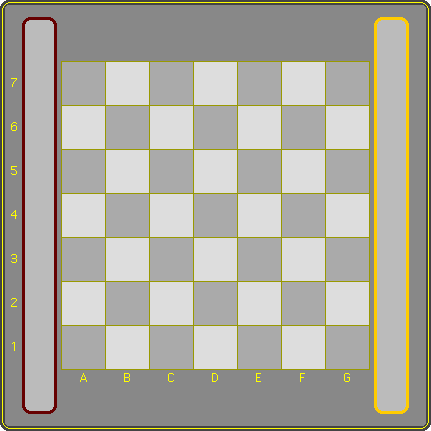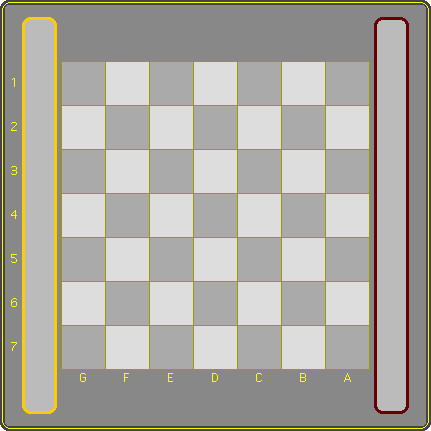 | Pawns move and capture in different ways. One night I thought 'what if in a chess game ALL pieces except the king would move and capture in different ways' ? In what was very much the same moment I saw that the three basic pieces, rook, bishop and knight, gave rise to six combinations. These consist of a top-piece called the hunter which constitutes the way the piece captures and a bottom-piece called the carrier, which constitutes the way the piece moves. Of course only hunters can give check, therefore a piece is called after its hunter. I immediately decided for piece drops to avoid the possibility of a drawish system. As an afterthought came the concept of Dragonfly which may be considered as 'normal Loonybird'. Thus I had two new games within a couple of minutes. The diagram shows the board with the pieces in the initial position. Play Loonybird interactively or against an AI |
- The nature of the pieces has been explained, but for the option to re-enter them.
If a piece is captured, it becomes the captor's property, and he may drop it, at the cost of a turn, on any square. As in all systems that feature the re-entering of pieces, this is called a 'piece in hand'.
The applet takes care of the switch. - Pawns are chess pawns, but do not have the initial double step. They promote on moving to the seventh rank to a piece the opponent has 'in hand'. This makes promotion exceptionally strong and, if all pieces are on the board, well worth even the worst exchange, say a rook for the bishop-knight, to force an opponent into a piece in hand. If the opponent has no piece in hand, a pawn may not move to the seventh rank. Pawns, if captured, are out of the game.
- The king is the same as in Chess but there is no 'castling'.
- Stalemate is a draw.
| How I invented ... Loonybird External links | ||||||
Loonybird © MindSports


















